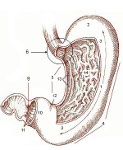How Does Weight Loss Surgery Work
Author: tiger Published Under: Health

To understand how Weight Loss Surgeries, like Gastric Bypass Surgery(GSB), work, it is important to have an understanding of how the stomach and intestines work together to process and digest food.
The Digestive Process
When you eat something, it passes down your throat and into your stomach, where the digestion process begins. Acids in the stomach begins to break down the food, although certain types of food, namely fat, can not be broken down in the stomach. Next, the food travels into the intestines, where the nutrients of the food are absorbed.
There are actually three sections of the intestine, which stretch for over ___ feet, each of which is responsible for breaking down a different set of nutrients. The remainder that can not be absorbed and waste products are then passed out of the body.
Types of Weight Loss Surgery
There are actually two types of weight loss surgery, which differ in how they affect the digestive system.
- Restrictive Weight Loss Surgery: In this type of surgery, the surgeon will reduce the size of the stomach, which makes a person get full much quicker.
- Malabsorptive Weight Loss Surgery: In this type of surgery, the surgeon will remove a section of the small intestine, which reduces the ability of the intestines to absorb nutrients.
Four different weight loss surgeries are preformed, which are either classified as Restrictive weight loss surgeries or Malabsorptive surgeries.
Vertical-banded Gastroplasty and Gastric Banding
Vertical Banded Gastroplasty is a restrictive procedure in which the stomach is stapled to make it considerably smaller in size, creating a pouch that fills up very quickly, limiting how rapidly a person can eat. Usually, this results in very quick weight loss that is not long lasting. The poor long term results is in part because people are usually able to continue eating sweets without problem, which causes a number of problems.
Gastric Banding is similar, except instead of using staples to section off the stomach, a lap band is used. The lap band can be adjusted by the doctor by adding or removing silicone. However, similar complications can arise and the success of gastric banding is similar to that of Vertical Banded Gastroplasty.
Biliopancreatic Diversion with Duodenal Switch(BDDS)
Biliopancreatic diversion with duodenal switch is a malabsorptive procedure, in which the first section of the small intestine, the duodenum, is connected to the last section of the small intestine, the ileum. This bypasses much of the small intestine and can result in dramatic weight loss and because the size of the stomach is not changed, they can continue eating as normal.
However, this procedures carries with it some serious side effects, because the duodenum is essential for absorbing nutrients and vitamins. If it is bypassed, the body is not able to absorb as many of these nutrients and vitamin deficiency is very common. Diarrhea is also common and other stool problems, as the food is not being completely digested.
Roux-en-Y Surgery
The Roux-en-Y surgery is the most common type of weight loss surgery and is considered primarily a restrictive surgery, but it also has a malabsorptive aspect as well. First, the stomach is stapled horizontally to create a very small subsection, usually only large enough to hold two tablespoons of food at a time. A section of the small intestine is then cut near the second portion of the intestine and connected to the subsection of stomach. This bypasses a significant portion of the small intestine, specifically the duodenum, but because the duodenum itself is not removed, it still produces bile and other components, but they do not make contact with food.
This is considered to be the least risky type of weight loss surgery, although it can still cause diarrhea, vomiting, and bloating. Interestingly eating sweets can actually cause a problem caused dumping, in which food quickly passes from the stomach pouch to the intestines before the stomach acid has been able to break it down. As a result, people tend to eat less sweets.